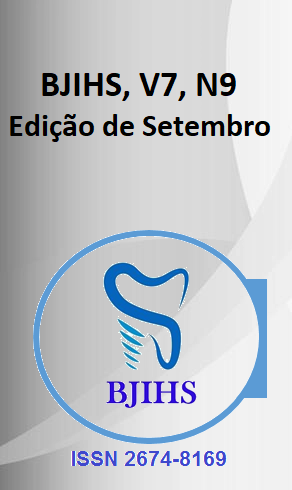Abstract
Electronic cigarette use, widely known as vaping, has emerged as one of the leading forms of nicotine consumption among adolescents and young adults worldwide. Initially marketed as safer alternatives to combustible tobacco, e-cigarettes gained popularity due to the availability of multiple flavors, reduced cost, ease of access, and aggressive marketing strategies specifically targeting younger demographics. However, growing scientific evidence demonstrates that far from being harmless, vaping is associated with structural and functional pulmonary damage, many of which are potentially irreversible. These include ventilation-perfusion mismatch, reduced ventilation homogeneity, airway hyperresponsiveness, chronic low-grade inflammation, and BMI-dependent perfusion abnormalities, in addition to severe and life-threatening events such as E-cigarette or Vaping Product Use-Associated Lung Injury (EVALI), a syndrome described with high morbidity and mortality in otherwise healthy young individuals.
Experimental and clinical studies have identified that the aerosol generated by vaping devices contains multiple harmful constituents, including heavy metals, aldehydes, ultrafine particles, nicotine at high concentrations, and solvents such as propylene glycol and vegetable glycerin, all capable of inducing epithelial injury. These compounds promote oxidative stress, inflammatory cascades, impaired ciliary function, and reduced mucociliary clearance, thereby increasing susceptibility to recurrent respiratory infections. Sensitive diagnostic tools such as the lung clearance index and advanced spirometric techniques have detected subclinical ventilatory impairment in adolescent vapers, even among those without overt respiratory symptoms. Furthermore, preliminary data suggest associations with cardiovascular dysfunction and metabolic disturbances, which may synergistically exacerbate pulmonary damage over time.
In light of this evidence, the present review aims to critically synthesize recent findings on the pulmonary consequences of vaping among adolescents and young adults, discussing clinical outcomes, mechanistic insights, and imaging correlates, while also addressing implications for preventive strategies and public health policies. Ultimately, current data strongly suggest that electronic cigarettes should not be regarded as a safe alternative to traditional tobacco products, but rather as a novel driver of nicotine dependence and pulmonary morbidity in younger populations.
References
AMJAD, S. et al. Pulmonary effects of aerosol constituents from electronic cigarettes in young users: clinical and experimental evidence. Chest, v. 168, n. 2, p. 245-256, 2025.
BURROWES, K. et al. Early functional impairment in adolescent e-cigarette users: a prospective observational study. Thorax, v. 79, n. 1, p. 33-42, 2024.
CARROLL, M. D. et al. Prevalence and patterns of e-cigarette use among adolescents in the United States. Journal of Adolescent Health, v. 67, n. 4, p. 455-463, 2020.
CORCORAN, M. D. et al. E-cigarettes as a gateway to tobacco smoking: functional and epidemiological evidence in adolescents. Pediatrics, v. 146, n. 6, p. e20200123, 2020.
KOPSOMBUT, M. D.; MS, J. et al. Subclinical ventilatory dysfunction in adolescent e-cigarette users: spirometry and lung clearance index findings. American Journal of Respiratory and Critical Care Medicine, v. 205, n. 5, p. 552-561, 2022.
LEE, H. et al. Severe acute lung injury associated with electronic cigarette use (EVALI) in adolescents: a case series. The New England Journal of Medicine, v. 384, n. 2, p. 148-157, 2021.
REDDY, M. D. et al. Systemic inflammation and impaired gas exchange in young electronic cigarette users. European Respiratory Journal, v. 58, n. 3, p. 312-324, 2021.
STANOJEVIC, S. et al. Perfusion heterogeneity and BMI interaction in adolescent vapers: functional imaging study. American Journal of Physiology - Lung Cellular and Molecular Physiology, v. 326, n. 1, p. L45-L56, 2024.

This work is licensed under a Creative Commons Attribution 4.0 International License.
Copyright (c) 2025 Grasiele Mattei Ise dos Santos , Vitória Mendonça Mendes, Lawrence Monteiro de Oliveira Pio , Carlos Pablo Quintanilha Gonçalves
